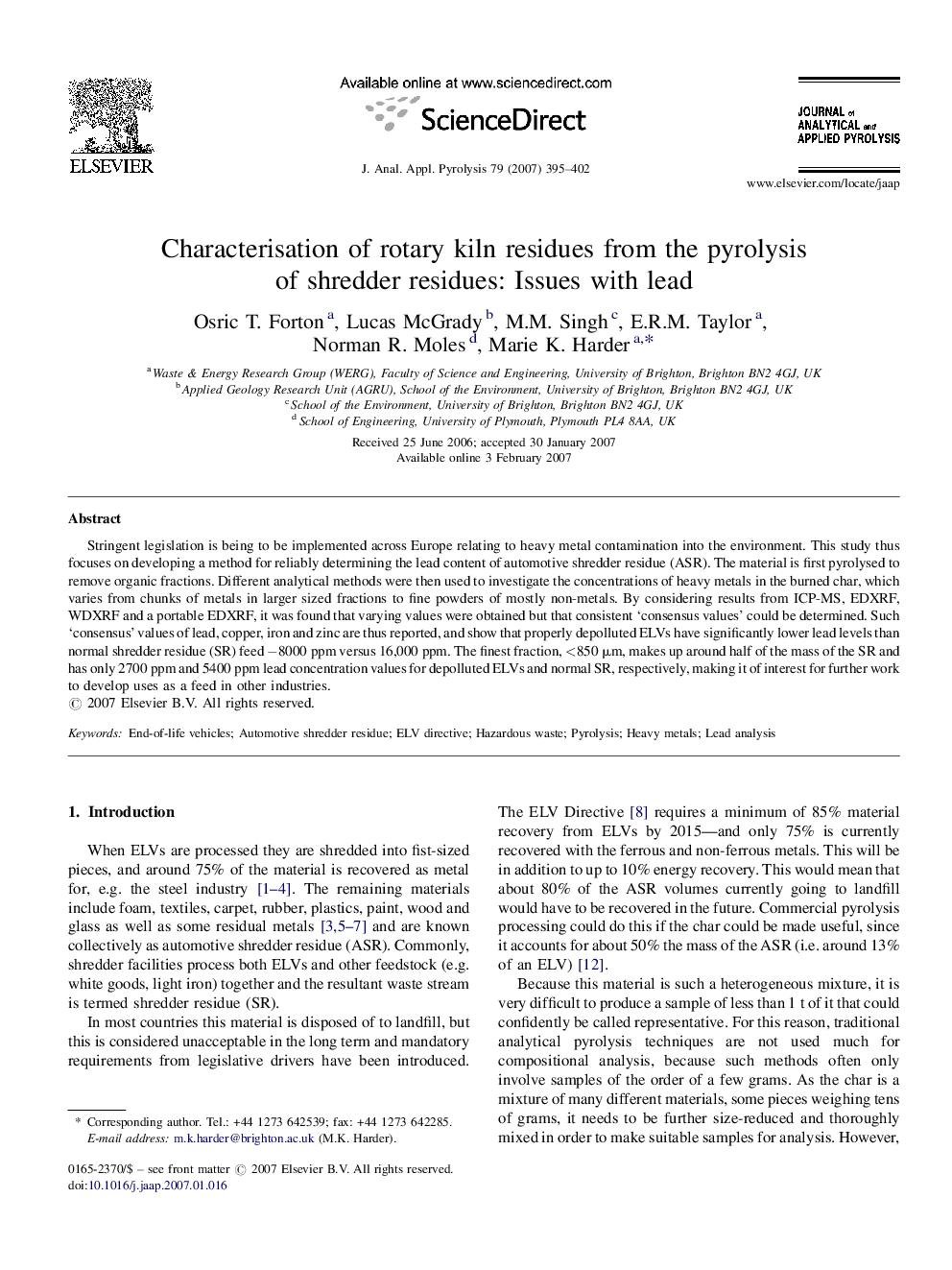| Article ID | Journal | Published Year | Pages | File Type |
|---|---|---|---|---|
| 1197973 | Journal of Analytical and Applied Pyrolysis | 2007 | 8 Pages |
Stringent legislation is being to be implemented across Europe relating to heavy metal contamination into the environment. This study thus focuses on developing a method for reliably determining the lead content of automotive shredder residue (ASR). The material is first pyrolysed to remove organic fractions. Different analytical methods were then used to investigate the concentrations of heavy metals in the burned char, which varies from chunks of metals in larger sized fractions to fine powders of mostly non-metals. By considering results from ICP-MS, EDXRF, WDXRF and a portable EDXRF, it was found that varying values were obtained but that consistent ‘consensus values’ could be determined. Such ‘consensus’ values of lead, copper, iron and zinc are thus reported, and show that properly depolluted ELVs have significantly lower lead levels than normal shredder residue (SR) feed −8000 ppm versus 16,000 ppm. The finest fraction, <850 μm, makes up around half of the mass of the SR and has only 2700 ppm and 5400 ppm lead concentration values for depolluted ELVs and normal SR, respectively, making it of interest for further work to develop uses as a feed in other industries.
